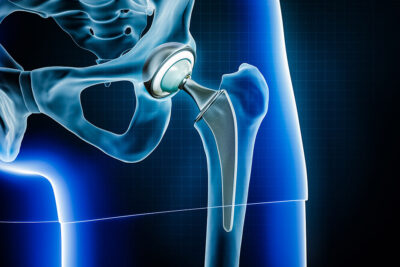By Stacey Kusterbeck
As an associate editor for an orthopaedic journal, James A. Browne, MD, noticed that an increasing number of economic analyses were being published dealing with new technologies in joint replacement. “Economic analyses, such as cost-effectiveness studies, are primarily a way of evaluating competing therapies based on measures of cost and effectiveness,” says Browne, Alfred R. Shands Professor of Orthopaedic Surgery and vice chair of clinical operations at the University of Virginia.
The vast majority of studies concluded that the new technology under examination was, indeed, cost-effective. Those studies then were used to justify the adoption of expensive technology that had never been proven to be effective in the first place.
“A major problem with these economic analyses is that they require a series of assumptions to be made,” according to Browne. Assumptions regarding cost and effectiveness are supposed to be based on unbiased data. In reality, the methods to make the assessments are not standardized. “It may be done in a way that is not scientifically legitimate,” says Browne. Researchers may use institutional data that have not been peer-reviewed, for instance. Researchers may selectively choose data from the literature to skew the findings toward a predetermined conclusion. Another concern is that studies might use an inappropriate control group, which gives misleading findings. “It is not difficult to arrive at a predetermined conclusion when you have this much freedom in manipulating model variables,” says Browne. “It is just too easy to game these studies.”
There is an obvious incentive for researchers who are funded by industry to conduct studies that support the new technology or product that a company is attempting to sell. Browne and colleagues explored whether industry funding was associated with favorable cost-effectiveness claims on hip/knee arthroplasty technologies.1 The researchers analyzed 43 articles published from 2010-2022 to determine the relationship between conflicts of interest and an article’s conclusions about new technologies (instrumentation, robotics, or implants) used in hip and knee arthroplasty. Overall, financial conflicts were present in 79.1% of the articles. Of 29 articles that had favorable conclusions, most (89.7%) had an author with a financial conflict of interest. Of 33 articles with a financial conflict of interest, most (78.8%) had favorable conclusions, and 87.5% of the 16 articles with industry funding had a favorable conclusion.
“These studies, when sponsored by industry or conflicted with financial interests, are very likely to support the sponsor’s new technology — and may be little more than a sophisticated marketing effort,” concludes Browne.
The field of hip and knee replacement has seen tremendous progress over the past several decades, with dramatic improvements in patient outcomes. Much of this progress is the result of the close collaboration of orthopaedic surgeons and industry. “This partnership is critical to the continued progress and improvement of the practice of joint replacement,” acknowledges Browne. Funding for research often comes from the industry and is invaluable in advancing the field. “Our study should not be seen as a condemnation of this vital cooperation,” cautions Browne. Rather, the findings raise a concern about one specific type of research: Cost-effectiveness assessment with new technologies. The association between financial conflicts of interest and favorable conclusions suggests that bias may be influencing the results of these studies. “I suspect that most of the time it is unconscious bias. Many of the investigators involved in these research studies are helping to pioneer the new technology and are ‘true believers’ in the effectiveness of these products,” says Browne.
Obviously, the potential for conscious bias exists as well. “The problem with these economic analyses is that it is just too easy to game the data inputs to arrive at the desired conclusions, whether done consciously or unconsciously,” says Browne. Brown says there are two take-home messages for orthopaedic surgeons. First, surgeons should be skeptical of these economic analyses, many of which do not represent vigorous science and are based on assumptions that may be questionable. Secondly, surgeons should bear in mind that a new technology in joint replacement should be first shown to be effective (irrespective of the cost) before doing a cost-effectiveness study. “Nothing can ever be cost-effective if it is not effective in the first place! These studies are putting the cart before the horse,” emphasizes Browne.
- Barakat N, Ramamurti P, Duensing IM, et al. Financial conflicts of interest and industry funding are associated with conclusions favorable to new technologies: A review of published economic analyses in hip and knee arthroplasty. J Arthroplasty 2024; Feb 24:S0883-5403(24)00172-4. doi: 10.1016/j.arth.2024.02.054. [Online ahead of print].

